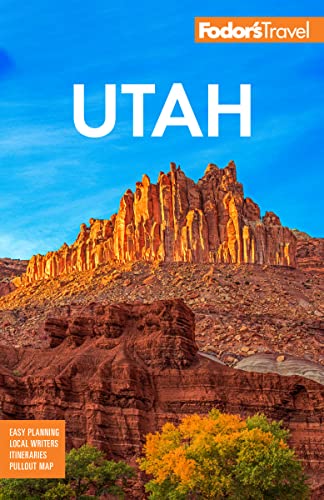The Pony Express Trail
Imagine a young man racing over the dusty trail on the back of a foaming mustang. A cloud of dust rises to announce him to the station manager, who waits with a new mount, some beef jerky, and water. The rider has galloped 11 miles since breakfast and will cover another 49 before he sleeps. That was the daily life of a courier with the Pony Express.
A rider had to weigh less than 120 pounds. He was allowed only 25 pounds in gear, which included four leather mail pouches, a light rifle, a pistol, and a Bible. The standard uniform consisted of a bright red shirt and blue pants. Bandits and rattlesnakes were handled with the guns. The blazing heat of the desert in the summer and blinding blizzards in the winter were his constant foes.
There are few places in the United States where the original trail and stations of the Pony Express survive in such pristine condition as they do in Utah. One of the best-preserved sections of the original Pony Express Trail, which was in operation for 19 months in the mid-19th century, is the 133-mile section through the desert of west-central Utah. You'll see territory that remains much as it was during the existence of the Pony Express, and many of the sights you'll see along the way haven't changed perceptibly since that time. The desert has preserved them.
If you want to traverse the route, the logical starting point is Camp Floyd–Stagecoach Inn State Park in Fairfield. The end is in Ibapah, 133 miles away on the Utah–Nevada border. Stone pillars with metal plaques mark the route that starts and ends on pavement, then becomes a dirt road for 126 miles that is passable when dry. The Bureau of Land Management maintains a campground at Simpson Springs, one of the area's most dependable water sources. Some interesting ruins are still visible at the Faust, Boyd, and Canyon stations. A brochure describing the major stops along the trail is available from the U.S. Bureau of Land Management's Salt Lake Field Office.
It takes a certain breed of romantic to appreciate the beauty of the land and life lived by those who kept the mail moving during the short time that the Pony Express existed. For those with a similar sense of adventure as the wiry young riders, who included "Buffalo Bill" Cody, traveling this trail is a chance to relive history. Historians say that the enterprise enabled communications between Washington, D.C. and California, keeping the state in the Union and helping to secure the North's eventual success in the Civil War. Stagecoaches, freight wagons, the Transcontinental Railroad, and the Lincoln Highway all followed the route pioneered by the Pony Express. Before the Pony Express, it took mail six to eight weeks to travel from Missouri to California; by Pony Express, the mail took 10 days to arrive. This labor-intensive system of communicating cross-country ended with the invention of the telegraph—once it was put into wide use, telegraphed messages went across the continent in a mere four hours.




